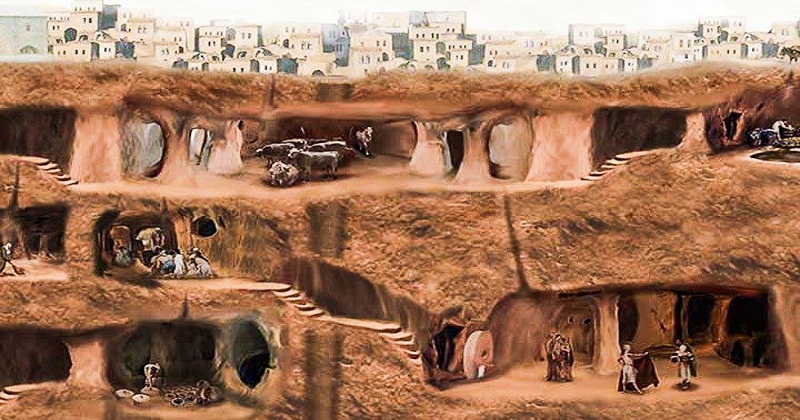Table of Contents
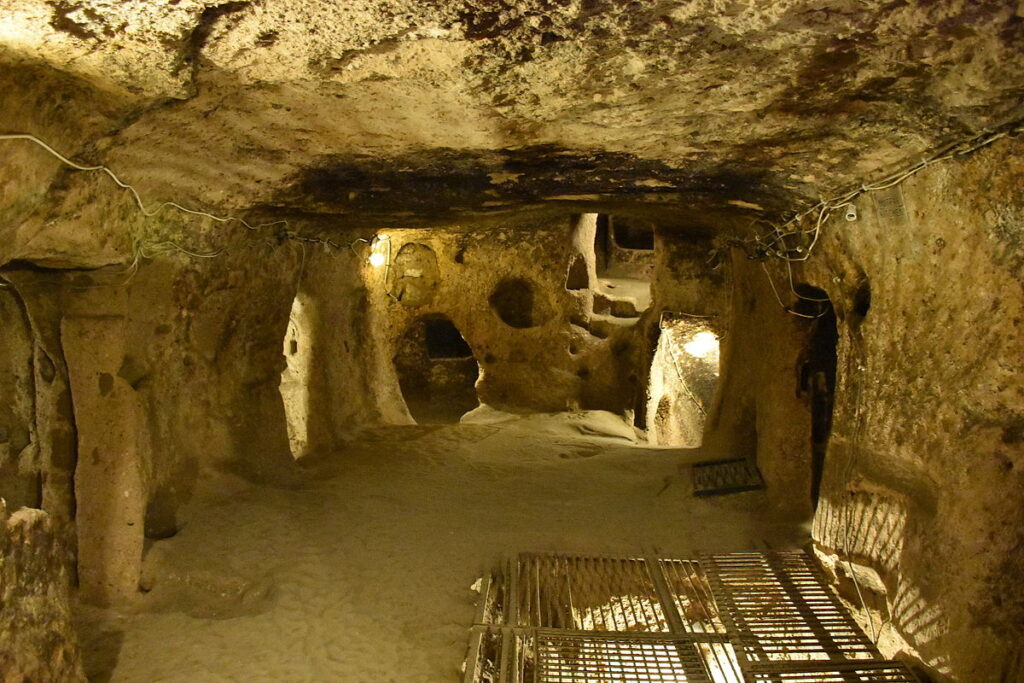
Introduction
Underground Cities of Cappadocia has Deep beneath the rugged landscapes in central Turkey, a world of mystery and history awaits. The region is famous for its stunning hot air balloon rides and unique rock formations, but hidden beneath the earth’s surface lies a labyrinth of underground cities that have fascinated explorers and historians for centuries. In this blog post, we’ll embark on a journey to unveil the captivating secrets of the underground cities of Cappadocia.
A Subterranean Marvel
Cappadocia, a land known for its surreal landscapes and fairy chimneys, also harbors a hidden treasure beneath its rocky terrain. These underground cities were carved into the soft volcanic rock over thousands of years and served as refuge and shelter for various civilizations.
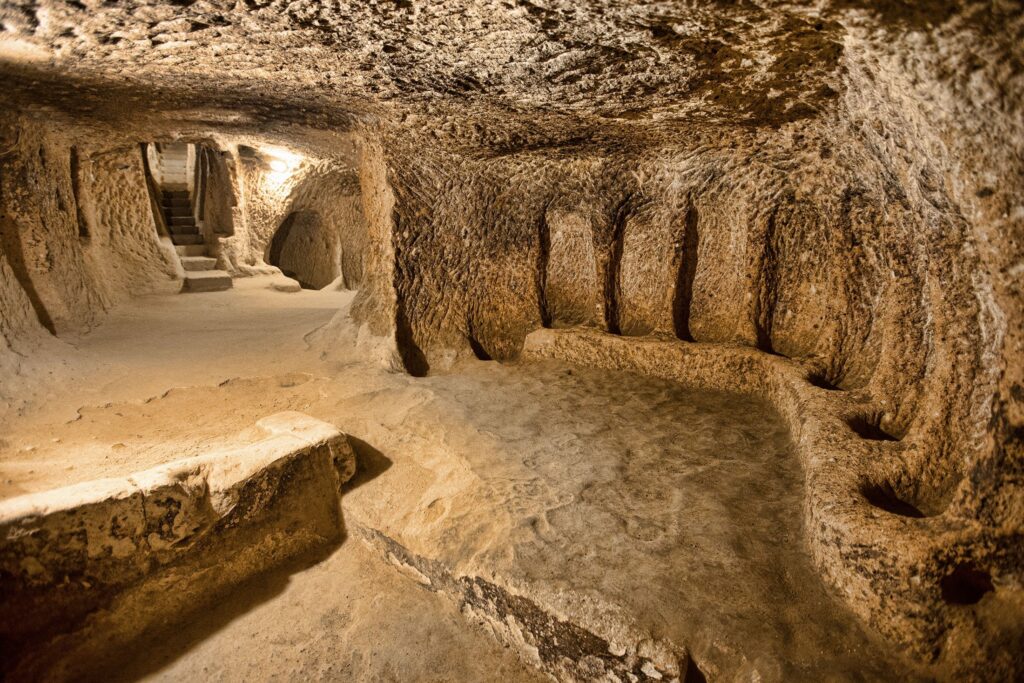
An Ancient Refuge
The earliest evidence of underground cities in Cappadocia dates back to the Hittite period (circa 1600-1200 BC). These ancient underground complexes were expanded and improved upon by later civilizations, including the Phrygians, Persians, and early Christians.
Why Go Underground?
The underground cities served multiple purposes throughout history. They were primarily designed as defensive structures against invaders and offered refuge during times of war. With their maze-like tunnels, hidden chambers, and ventilation shafts, these cities were ingeniously engineered to sustain life underground.
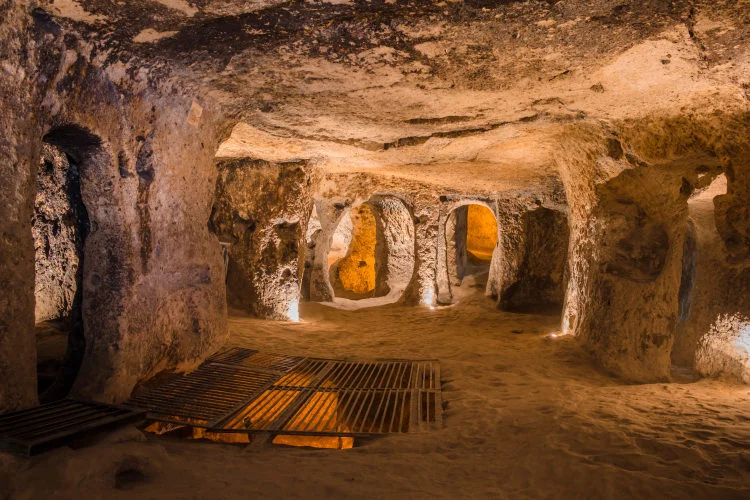
Derinkuyu and Kaymakli – The Two Largest Underground Cities
Derinkuyu and Kaymakli are the most well-known of Cappadocia’s underground cities. Derinkuyu, the deepest, reaches depths of approximately 200 feet and could house up to 20,000 people, complete with chapels, storage rooms, and even stables. Kaymakli, while not as deep, features a similar array of chambers, tunnels, and ventilation shafts.
A Life Below Ground
Life in the underground cities was both challenging and innovative. Communities grew their own food, raised livestock, and drew water from wells. They used massive millstones for grinding grain and created ingenious stone doors that could be rolled in front of tunnel entrances to seal them off.
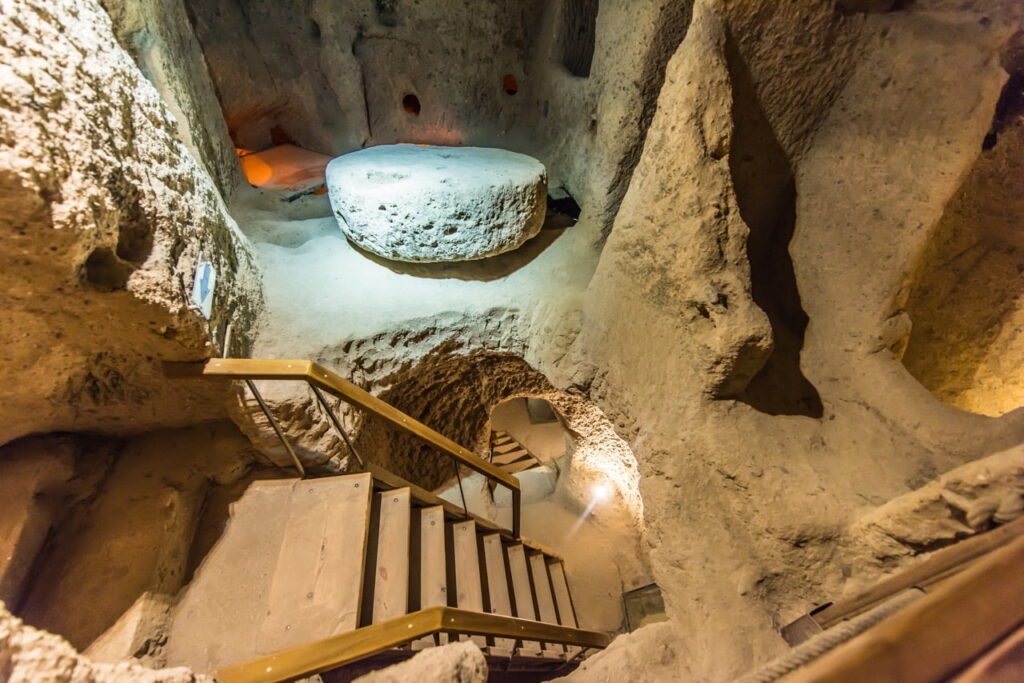
Rediscovery and Preservation
Though many of the underground cities were lost to time, they have been gradually rediscovered and restored. Today, these remarkable sites are open to visitors, offering a unique glimpse into the past and a chance to explore the depths of Cappadocia’s history.
Conclusion
The underground cities of Cappadocia are a testament to human ingenuity, determination, and adaptability. They provide a unique opportunity to step back in time and experience the life of those who lived beneath the earth’s surface. Exploring the winding tunnels, hidden chambers, and ancient artifacts within these underground marvels is an adventure that immerses you in the rich history of Cappadocia and the fascinating stories of its subterranean residents. The underground cities are a true testament to the remarkable human ability to create and thrive even in the most challenging environments.
